


Crafting A Sustainable Future
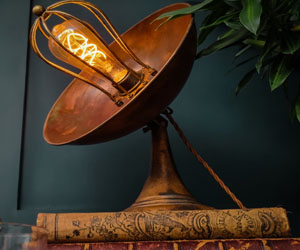
Green do-it-yourself (DIY) projects are a creative and environmentally conscious way to make a positive impact on the planet while indulging in your passion for crafting. These projects focus on using sustainable materials, repurposing items, and reducing waste. In this article, we'll explore the world of green DIY projects, their benefits, and how you can get started on your journey towards a more sustainable and eco-friendly lifestyle.
The Essence Of Green DIY Projects
Green DIY projects combine creativity with sustainability, providing a platform for you to express yourself while making environmentally responsible choices. These projects encompass a wide range of activities, from upcycling furniture and crafting eco-friendly home decor to making your own natural cleaning products or gardening with organic, homegrown produce.
Environmental Benefits
One of the most significant advantages of green DIY projects is their environmental impact. By consciously choosing sustainable materials, repurposing items, and reducing waste, these projects contribute to a greener and more eco-friendly world. They help lower the carbon footprint by diverting usable materials from landfills, conserving resources, and minimizing the environmental impact of manufacturing and transportation.
Promoting Sustainability
Green DIY projects promote sustainability in multiple ways. They encourage you to use sustainable, eco-friendly materials, such as reclaimed wood, bamboo, recycled fabrics, and non-toxic paints. By crafting your own goods, you also reduce the demand for mass-produced items, which often involve harmful chemicals, excessive packaging, and wasteful practices.
Cost-Efficiency
Many green DIY projects offer cost-efficiency. Making your own household products, for example, can save you money in the long run. Crafting your own furniture or decor can be more economical than buying new items, especially if you upcycle or repurpose materials you already have or find in thrift stores.
Personalization And Creativity
Green DIY projects allow for a high level of personalization and creativity. You have the freedom to tailor projects to your unique style and preferences, which can result in truly one-of-a-kind creations. Whether you're sewing eco-friendly clothing, crafting sustainable jewelry, or building a backyard garden, you can put your own mark on each project.
Tips For Getting Started
Choose Eco-Friendly Materials: When starting a green DIY project, research and select sustainable, eco-friendly materials. Look for materials with certifications like FSC (Forest Stewardship Council) or GOTS (Global Organic Textile Standard).
Repurpose And Upcycle: Get creative with repurposing and upcycling old items. Whether it's turning an old ladder into a bookshelf or using glass jars for storage, repurposing reduces waste and gives items a second life.
Learn And Experiment: Explore DIY tutorials, books, and online resources to acquire the necessary skills and knowledge. Don't be afraid to experiment and try new things. Learning and improving your crafting abilities is part of the fun.
Share With The Community: Join local or online DIY communities to share your projects, get feedback, and inspire others to embrace green DIY. Sharing your creations can be a rewarding experience and may encourage others to join the movement.
Green DIY projects are more than just creative endeavors; they are an essential part of a sustainable lifestyle. By embracing the principles of sustainability in your crafting endeavors, you contribute to a greener, more eco-conscious world. These projects offer personal satisfaction, cost-efficiency, and the opportunity to express your creativity while making environmentally responsible choices. Whether you're making eco-friendly home decor, crafting natural cleaning products, or engaging in sustainable gardening, green DIY projects are a practical way to create a more sustainable and beautiful world.
Relaxation Through Candles
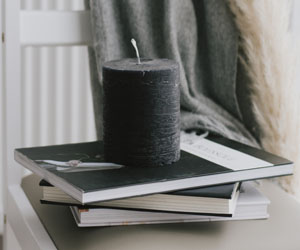 Aromatherapy And Relaxation
Aromatherapy And Relaxation
In addition to their enchanting light, candles can be enhanced with soothing fragrances that promote relaxation. Aromatherapy candles are infused with essential oils that can evoke a variety of emotions and sensations. For instance, lavender is known for its calming and stress-reducing properties, while citrus scents like lemon and orange can boost energy and elevate mood.
Incorporating Candles Into Your Relaxation Routine
Bath Time Bliss: A warm bath can be made even more indulgent with the addition of scented candles. The soft lighting and aromatic scents can transform your bathroom into a personal sanctuary, creating an oasis of relaxation.
Meditation And Mindfulness: Candles are often used as focal points during meditation and mindfulness exercises. Gazing at the flame can help clear your mind and bring about a sense of inner peace and tranquility.
Dinner By Candlelight: Set the stage for relaxation by enjoying a quiet, candlelit dinner. Whether alone or with a loved one, this simple act can turn an ordinary meal into a serene, enjoyable experience.
Bedroom Retreat: Make your bedroom a haven of relaxation by placing scented candles on your bedside table. The soothing scent and soft light can help you unwind and prepare for a restful night's sleep.

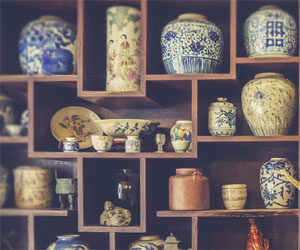
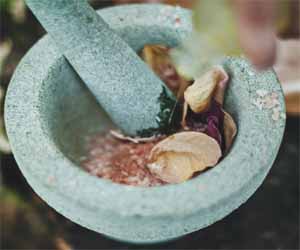

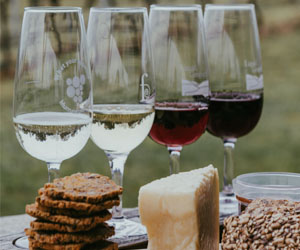 Taste And Smell: The sense of taste and smell are closely intertwined, working together to create the flavors we savor in our favorite foods and beverages. These senses have the power to evoke powerful memories and emotions. The aroma of a homemade apple pie might transport you back to your grandmother's kitchen, while the taste of a particular wine could remind you of a special celebration.
Taste And Smell: The sense of taste and smell are closely intertwined, working together to create the flavors we savor in our favorite foods and beverages. These senses have the power to evoke powerful memories and emotions. The aroma of a homemade apple pie might transport you back to your grandmother's kitchen, while the taste of a particular wine could remind you of a special celebration.
Touch: Our sense of touch allows us to experience a wide range of sensations, from the warmth of sunlight on our skin to the comforting embrace of a loved one's hug. This sense plays a fundamental role in our connections with the world and the people in it.
Sight: Sight is often considered the dominant sense, and it's not hard to see why. The world is a visual symphony of colors, shapes, and patterns. Our sight helps us navigate the world, appreciate art and beauty, and communicate with one another through facial expressions and body language.
Hearing: The sense of hearing is a gateway to the auditory world, from the laughter of friends to the soothing sounds of nature. Music, in particular, has the power to evoke profound emotions and transport us to different times and places.
Emotional Impact: Sensory experiences have a profound emotional impact on our lives. They can make us feel joy, nostalgia, awe, or even a sense of tranquility. A simple scent or a familiar tune can trigger memories and emotions, creating a bridge between the past and the present.
Creativity, Skill, And Personal Fulfillment
 Limitless Creativity: Woodworking projects provide a platform for limitless creativity. From crafting custom furniture pieces that blend seamlessly with your home's decor to designing unique wooden sculptures that captivate the imagination, there are no boundaries when it comes to the artistic possibilities. Woodworkers have the privilege of transforming their ideas and visions into tangible forms, resulting in projects that reflect their own unique style and personality.
Limitless Creativity: Woodworking projects provide a platform for limitless creativity. From crafting custom furniture pieces that blend seamlessly with your home's decor to designing unique wooden sculptures that captivate the imagination, there are no boundaries when it comes to the artistic possibilities. Woodworkers have the privilege of transforming their ideas and visions into tangible forms, resulting in projects that reflect their own unique style and personality.
Practicality Meets Artistry: Woodworking is not solely about artistic expression. Many projects fuse practicality with artistry. Whether you're building a sturdy bookshelf, a functional workbench, or a custom kitchen cabinet, your creations are designed to enhance daily living while showcasing the craftsmanship behind the work. This blend of form and function adds depth to the world of woodworking projects, where utility meets aesthetics.
The Learning Curve: Woodworking projects encompass a wide spectrum of complexity, catering to beginners and experts alike. For those new to the craft, simple projects like wooden coasters or picture frames offer an excellent starting point. As you gain confidence and experience, you can gradually advance to more intricate endeavors, such as crafting intricate tables, intricate cabinetry, or ornate carvings. The learning curve is part of the appeal, encouraging woodworkers to expand their skills and knowledge.
Creating Art From Earth
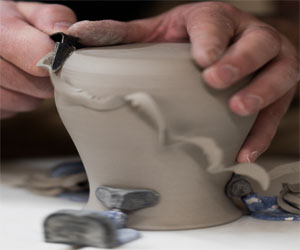 2. Stress Relief: Working with clay has a therapeutic effect. The tactile experience of manipulating the cool, moist material, combined with the meditative process of shaping, pinching, and molding, can help alleviate stress and promote mindfulness. As you immerse yourself in the creative process, daily concerns tend to fade away.
2. Stress Relief: Working with clay has a therapeutic effect. The tactile experience of manipulating the cool, moist material, combined with the meditative process of shaping, pinching, and molding, can help alleviate stress and promote mindfulness. As you immerse yourself in the creative process, daily concerns tend to fade away.
3. Sense Of Accomplishment: Completing a pottery project can be immensely rewarding. The tangible nature of the craft allows hobbyists to see the fruits of their labor take shape before their eyes. Whether it's the first pinch pot or a finely glazed vase, the sense of accomplishment is empowering and boosts self-esteem.
4. Functional And Decorative Items: Pottery offers a practical aspect as well. Hobbyists can create personalized, one-of-a-kind items for everyday use, such as plates, bowls, and utensils. These functional pieces can add a special touch to your home while showcasing your craftsmanship. Alternatively, pottery can be used to craft decorative items, making your living space uniquely beautiful.
5. Continuous Learning: Pottery is a hobby that offers endless opportunities for learning and growth. From mastering basic techniques like coiling, slab-building, and wheel-throwing to experimenting with glazes, there's always something new to discover. Experienced potters can push their boundaries by exploring advanced methods and complex forms.
Exploring The Benefits
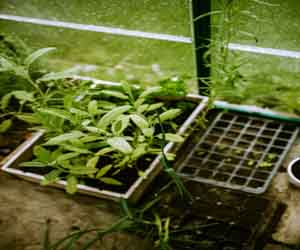 Medicinal Properties
Medicinal Properties
Herbs have been used for centuries as natural remedies for a wide range of ailments. Lavender is renowned for its calming and soothing properties, chamomile for its digestive benefits, and peppermint for its ability to alleviate headaches. Growing these herbs allows you to harness their medicinal powers for home remedies and holistic wellness.
Aromatherapy
The fragrant oils found in herbs are not just for flavor and aroma. They also have therapeutic qualities. Lavender, for instance, is widely used in aromatherapy to promote relaxation and reduce stress. Aromatic herbs can transform your garden into an outdoor sanctuary for your senses.
Environmental Benefits
Herb gardens contribute to a more sustainable and eco-friendly lifestyle. By growing your herbs, you reduce the demand for commercially cultivated, chemically treated herbs. This practice conserves resources and minimizes the environmental impact of herb production.
Cost-Effective
Maintaining an herb garden can save you money in the long run. Store-bought herbs can be expensive, and they often come in quantities larger than you need, leading to waste. By growing your herbs, you can have a fresh supply on hand while minimizing expenses.
Educational Value
Herb gardening offers a valuable learning experience. It can be an engaging and educational hobby for individuals and families alike. Gardening teaches responsibility, patience, and an appreciation for the natural world. It allows you to connect with the earth and understand the cycles of growth and renewal.
Aesthetic Pleasure
Herb gardens are not just practical; they are also beautiful. The lush green foliage, colorful blossoms, and fragrant aromas create a visually appealing and soothing garden space. Herbs can be integrated into ornamental garden designs, adding both utility and charm.
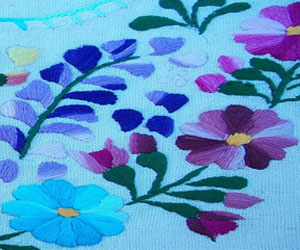 The World Of Textile Art: Beyond the realm of fashion, textile art is a profound expression of fabric creativity. Artists use various techniques like embroidery, quilting, and weaving to craft stunning pieces that blend traditional and contemporary elements. Each piece tells a story, often reflecting the artist's emotions, experiences, and cultural influences.
The World Of Textile Art: Beyond the realm of fashion, textile art is a profound expression of fabric creativity. Artists use various techniques like embroidery, quilting, and weaving to craft stunning pieces that blend traditional and contemporary elements. Each piece tells a story, often reflecting the artist's emotions, experiences, and cultural influences.
Fabric Creativity In Home Decor: Home decor is another arena where fabric creativity shines. Whether it's hand-stitched cushions, beautifully quilted throws, or intricate wall hangings, textiles have the power to transform a living space. Fabric creativity allows individuals to customize their homes, infusing them with personal style and warmth.
Eco-Friendly Fabric Creativity: In recent years, fabric creativity has also embraced eco-friendliness. Artists and designers are increasingly using sustainable and upcycled materials to create unique pieces. This eco-conscious approach not only reduces environmental impact but also adds depth to the narrative behind each creation.
The Intersection Of Technology And Fabric Creativity: Modern fabric creativity is not limited to traditional techniques. Technology has entered the arena, with 3D printing, digital textile design, and even smart fabrics becoming part of the creative palette. These innovations allow artists to experiment with entirely new forms, structures, and functions.
Avenues For Personal Expression: For many, fabric creativity serves as a therapeutic outlet, a way to destress and find joy in the act of creation. Whether you're an experienced seamstress, a novice embroiderer, or someone experimenting with fabric for the first time, it offers a platform for self-expression and a tangible outcome of your imagination.
The Allure Of Vintage Items
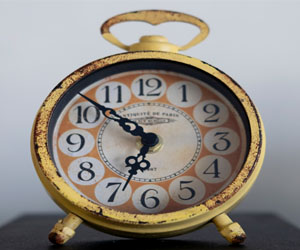 A Glimpse Into The Past
A Glimpse Into The Past
Vintage items transport us back in time, allowing us to connect with the past and experience the styles and aesthetics of bygone eras. Each vintage piece carries a story, representing the culture, trends, and craftsmanship of the time in which it was created. It's like holding a tangible piece of history in your hands.
Unique And One-Of-A-Kind
One of the primary attractions of vintage items is their uniqueness. Unlike mass-produced modern goods, vintage pieces are often one-of-a-kind or produced in limited quantities. This rarity gives vintage items a sense of exclusivity and individuality, making them highly sought after.
Quality Craftsmanship
Vintage items are known for their superior craftsmanship. In the past, attention to detail and quality were highly prized, resulting in products that were built to last. Vintage clothing often features hand-stitched seams, while vintage furniture may showcase intricate woodwork. The durability and craftsmanship of vintage items are often far superior to their modern counterparts.
Sustainable Shopping
In a world increasingly concerned about sustainability and environmental impact, vintage shopping has gained popularity as a sustainable alternative to fast fashion and disposable consumer goods. Buying vintage items extends the life cycle of products and reduces the demand for new manufacturing, contributing to a greener and more eco-conscious lifestyle.